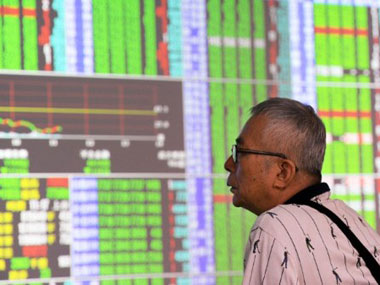Please Share::  India Equity Research Reports, IPO and Stock News
India Equity Research Reports, IPO and Stock News
Visit http://indiaer.blogspot.com/ for complete details �� ��
Visit http://indiaer.blogspot.com/ for complete details �� ��
The initial public offer (IPO) of MCX, the biggest commodity exchange in India based on the value of futures traded, was launched today.
When it debuts on the stock exchange, MCX will become the first exchange listed in India. The IPO, which is an offer for sale, will offer around 6.1 million shares out of a total capital base of 50 million shares. An offer for sale is a public offering by an existing set of investors and promoters who are offloading a portion of their holdings.
Since it is an offer for sale, no money goes to the company (it will got to the shareholders who are selling their shares). However, MCX will bear a portion of the cost of listing . While the anchor book (meant for high value investors) has opened today, retail investors get their chance to subscribe from tomorrow.
The main promoter of the company is Financial Technologies, whose shareholding will fall to around 26 percent from 31.2 percent at present. Other shareholders selling a portion of their stakes are State Bank of India, GLG Financials Fund, Alexandra Mauritius, Corporation Bank, ICICI Lombard General Insurance Company and Bank of Baroda.
What’s the potential of MCX?
The total value of commodity futures traded on MCX accounts for more than 85 percent of the Indian commodity futures industry. In fact, for the first six months in 2011, MCX was the largest silver exchange, the second-largest gold, copper and natural gas exchange and the third-largest crude oil exchange in the world.
The biggest strength of the company comes from India’s economic growth. An Aditya Birla Money note on the IPO estimates 30 percent growth in revenues in the next year, along with a high operating margin of 50.2 percent.
The exchange is known for introducing innovative products. With the help of current promoter Financial Technologies, it introduced indices for various sectors such as MCX Agri, MCXEnergy and MCXMetal. It was also the first exchange in India to offer trading in crude oil, steel and almonds.
MCX’s sources of operating income are transaction fees, membership admission fees, annual subscription fees and terminal charges. Transaction fees are the largest contributor to operating revenues, and its share has grown from 87.6 percent two years ago to 96.1 percent in first nine months of this financial year. However, most of its operating costs are actually fixed or semi-fixed in nature, which accounts for the high operating margin.
It’s also not greedy for cash: it sits atop a cash pile of around Rs 230 crore, which contributes to around one-fourth of its profit before tax.
The most attractive part, however, is the valuations of the IPO. The earnings per share is estimated at Rs 57 for this financial year (ending March 2012) and the price band is Rs 860-1,032 per share.
That means the stock’s price is about 15-18 times the earnings per share for this year. If the growth rate is at 30 percent as estimated by the Aditya Birla Money report, the multiple will come to around 13.9 times, which is really attractive given its global peers trade at 20 times their forward earnings without even growing at high rates.
What’s the biggest risk?
The biggest risk lies in the possibility that the government might impose a commodity transaction tax, similar to the securities transaction tax. If the tax is introduced, the arbitrage opportunities might shrink liquidity in the market and harm profitability.
Further, as MCX is the first big IPO in a long time to hit the markets, a number of brokers, banks and non-banking finance companies are helping investors buy the shares by offering loans.
However, over the past few years, issues that are heavily funded tend to get over-subscribed by a large margin, which results in lower share allocations to investors. For the investor, that increases the cost of funding because in effect, he or she takes a loan to buy a certain level of shares but is allotted a lower number of shares in return.
But for this, fundamentally, the issue looks like a decent bet.


No comments:
Post a Comment